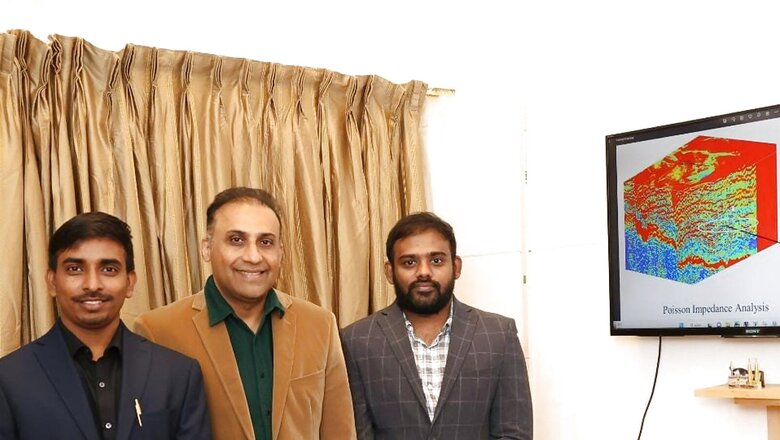
views
Indian Institute of Technology Madras (IIT Madras) researchers have developed a statistical approach that can characterize subsurface rock structure and detect petroleum and hydrocarbon reserves. The method proposed was successful in providing critical information on the rock type distribution and hydrocarbon saturation zones in ‘Tipam formation’ located in Upper Assam basin.
The researchers used this approach to analyse data obtained from seismic surveys and well logs from the North Assam region known for its petroleum reserve. The institute says they were able to get accurate information on the rock type distribution and the hydrocarbon saturation zones at such depth zones of 2.3 km.
This Research was led by Prof. Rajesh R. Nair, Faculty, Petroleum Engineering programme, Department of Ocean Engineering, IIT Madras. The findings were published in the prestigious journal NATURE Scientific Reports. The paper was co-authored by Mr. M. Nagendra Babu and Dr. Venkatesh Ambati researchers of IIT Madras along with Prof. Rajesh R. Nair.
Read | IIT Guwahati Report Multifunctional Enzyme that can Breakdown Woody Biomass for Conversion to Bioethanol
Since the discovery of the Digboi oilfield in Upper Assam more than 100 years ago, the Assam-Arakan has come to be characterized as a ‘category-I’ basin to denote that they have significant amounts of hydrocarbon reserves. Petroleum is found in the pore space of a hydrocarbon-bearing underground rock formations. The identification of petroleum reservoirs in the oil-rich basins of Assam requires a survey of the rock structure of this region and the detection of hydrocarbon saturation zones in them.
Prof. Rajesh R. Nair, said, “The challenge to imaging underground structures arises from the low resolution of the seismic images and the difficulty in correlating the data from well-log and seismic surveys. Our team at IIT Madras has developed a methodology for predicting the hydrocarbon zones from complex well log and seismic data.”
He further added, “The characterization of subsurface structures for the detection of oil-bearing rocks involves the use of data analytics methods that establish statistical relationships between seismic data and petrophysical data obtained from well logs. These relationships help in estimating the petrophysical properties of the subsurface.”
The team used their method to detect hydrocarbon-saturated zone in the sandstone-based reservoir at the Tipam formation in the Upper Assam basin. The researchers combined different statistical approaches to obtain the subsurface rock structure using data from seismic surveys and well logs.
Prof. Rajesh Nair said, “Seismic inversion is a process that is commonly used to transform the seismic reflection data into a quantitative rock-property description of a reservoir. Our team used a type of seismic inversion, called ‘Simultaneous Prestack Seismic Inversion’ (SPSI). This analysis provided the spatial distribution of petrophysical properties in the seismic image. Our team then combined this with other data analytics tools such as target correlation coefficient analysis (TCCA), Poisson impedance inversion, and Bayesian classification to successfully obtain the underground rock and soil structure of the region.”
In the course of this work, the researchers also introduced a notable attribute named ‘Poisson impedance’ (PI) in their analysis. PI was used to identify the fluid content in the sandstone reservoir. Their findings also proved that ‘Poisson impedance’ (PI) was more effective in estimating hydrocarbon zone than conventional attributes.
Prof.Rajesh Nair added that India’s mega offshore bidding process of 26 blocks for producing oil, and gas is presently ongoing and such new technologies for finding new discoveries will boost the oil and gas business enormously. For example on a thumb rule, a 0.07 incremental change in successful new technology will boost the oil and gas business by about 10 percent
Read all the Latest Education News here



















Comments
0 comment